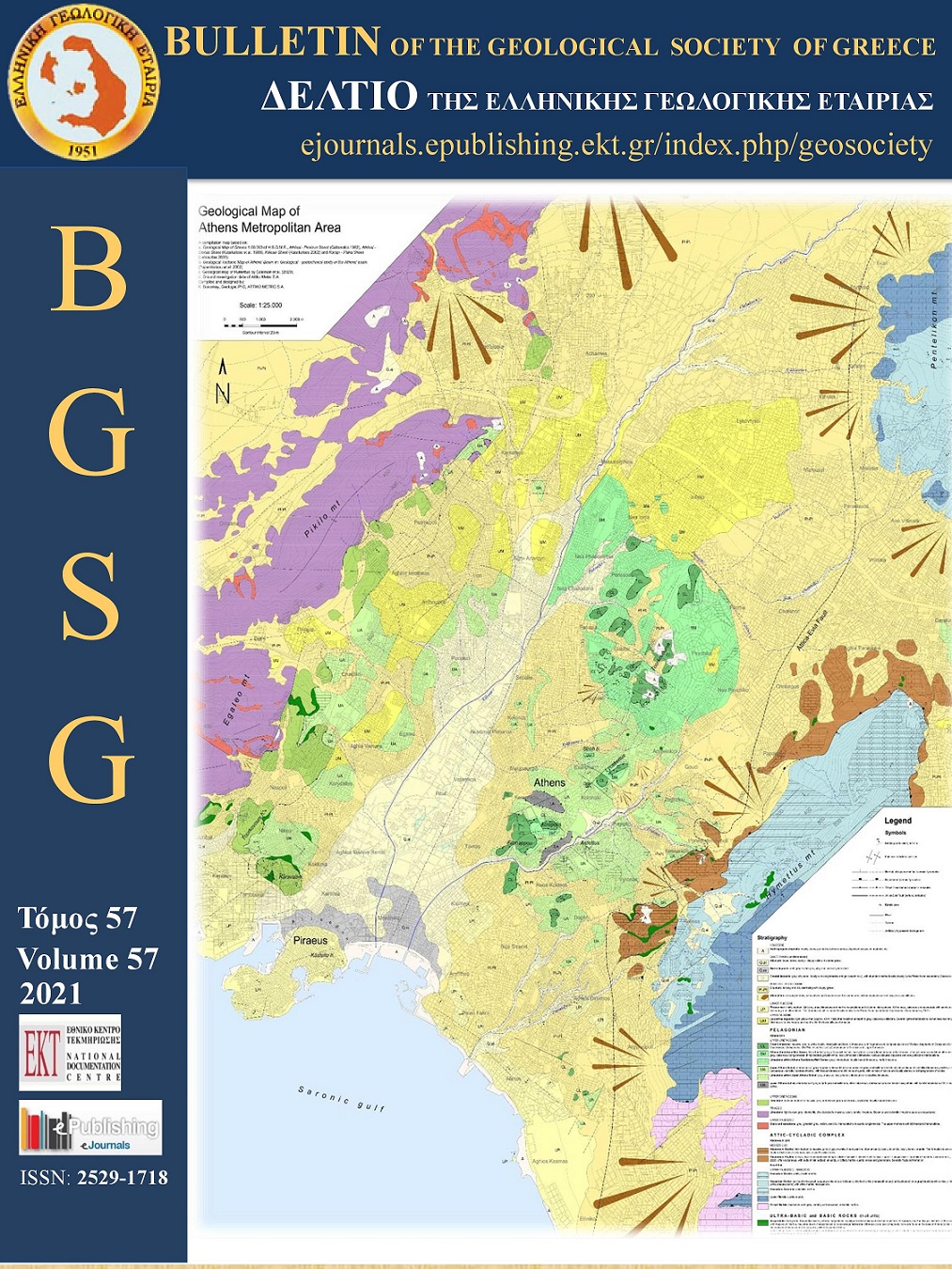Paleohydrology of the Stefanina Cave (Greece)
Περίληψη
The development of hypergene Stefanina Cave, the hydrological conditions, and the maximum discharge of the paleo-flow are studied, based on its pattern in ground-plan, the geometry of the passage, and the peak flow velocity from the dimensions of the scallops. The village of Stefanina is located East of Thessaloniki and the cave NE of the village. A study was conducted measuring the orientation of the discontinuities of the rocks inside and outside the cave, the scallops in various sites to estimate the flow velocities, and in addition, were taken photographs for the full analysis of its cross-section. The cave-in ground-plan has a pattern of branches, which is often associated with recharging through karstic depressions. The shape of the passages is both curvilinear and angular, depending on the foliage and the fractures. The symmetrical phreatic passage shape has been evolved to a vadose canyon, forming a keyhole passage in cross-section. This is indicative of a water table drop. The scallops are visible in a meandering channel, where the discharge of the paleo-flow is estimated. The estimated peak flow velocity ranges from 0.4 to 2.7 m / s, while the area-specific peak flow discharge is estimated to be 2.2 m3/s. On the one hand, the scallops represent the peak flow velocity, on the other hand, the karst springs have a limited maximum discharge, regardless of the size of the catchment, making it impossible to use the calculated paleo-discharge to estimate the respective catchment area.
Λεπτομέρειες άρθρου
- Πώς να δημιουργήσετε Αναφορές
-
Lazaridis, G. T., Fellachidou, K., & Georgaki, M.-N. (2021). Paleohydrology of the Stefanina Cave (Greece). Δελτίο της Ελληνικής Γεωλογικής Εταιρείας, 57(1), 52–67. https://doi.org/10.12681/bgsg.26168
- Τεύχος
- Τόμ. 57 Αρ. 1 (2021)
- Ενότητα
- Γεωμορφολογία

Αυτή η εργασία είναι αδειοδοτημένη υπό το CC Αναφορά Δημιουργού – Μη Εμπορική Χρήση 4.0.
Οι συγγραφείς θα πρέπει να είναι σύμφωνοι με τα παρακάτω: Οι συγγραφείς των άρθρων που δημοσιεύονται στο περιοδικό διατηρούν τα δικαιώματα πνευματικής ιδιοκτησίας επί των άρθρων τους, δίνοντας στο περιοδικό το δικαίωμα της πρώτης δημοσίευσης. Άρθρα που δημοσιεύονται στο περιοδικό διατίθενται με άδεια Creative Commons 4.0 Non Commercial και σύμφωνα με την οποία μπορούν να χρησιμοποιούνται ελεύθερα, με αναφορά στο/στη συγγραφέα και στην πρώτη δημοσίευση για μη κερδοσκοπικούς σκοπούς. Οι συγγραφείς μπορούν να: Μοιραστούν — αντιγράψουν και αναδιανέμουν το υλικό με κάθε μέσο και τρόπο, Προσαρμόσουν — αναμείξουν, τροποποιήσουν και δημιουργήσουν πάνω στο υλικό.



